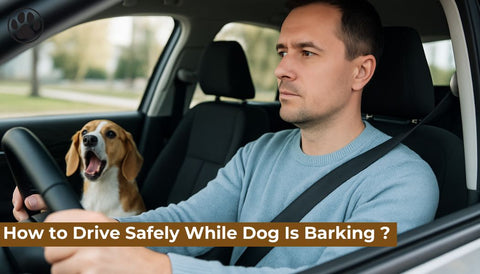
What Are the Requirements to Be a Police Dog ?
of reading - words
Police dogs, also known as K-9 units, play an essential role in modern law enforcement. These highly trained canines are used in a variety of tasks, from tracking suspects and detecting drugs to search and rescue operations. But what does it take for a dog to qualify for such demanding and specialized work?
In this article, we’ll explore what are the requirements to be a police dog, covering everything from breed preferences and health standards to temperament and training. Whether you're simply curious or considering donating or training a dog for service, this guide offers a comprehensive overview of police dog qualifications.
What Is a Police Dog?
A police dog is a specially trained canine used by law enforcement agencies to assist in tasks that require speed, agility, scent detection, or intimidation. These dogs work closely with a handler and are considered officers in many jurisdictions, often receiving the same legal protections as human law enforcement agents.
Breeds Commonly Used in Police Work
One of the first requirements to be a police dog is breed suitability. While any dog with the right traits might be considered, certain breeds are preferred due to their intelligence, loyalty, and trainability.
The most commonly used breeds include:
-
German Shepherd
Known for strength, intelligence, and obedience. Ideal for patrol and apprehension. -
Belgian Malinois
Agile and energetic with a strong work ethic. Popular in military and tactical police units. -
Labrador Retriever
Gentle and focused. Frequently used in detection work such as drug, bomb, or cadaver searches. -
Dutch Shepherd
Versatile and resilient. Often used in similar roles to the German Shepherd. -
Bloodhound
Famous for scent tracking. Used primarily in search and rescue or fugitive tracking.
While other breeds can be trained, these dogs consistently meet the physical and mental requirements for law enforcement.
Health and Physical Fitness Standards
Police dogs must be in excellent physical condition. This includes:
-
Strong cardiovascular health
-
Proper weight and muscle tone
-
No genetic conditions such as hip dysplasia
-
Healthy teeth, eyes, and ears
-
Up-to-date vaccinations and preventive care
A veterinary evaluation is usually the first step in the selection process. Dogs must pass all health screenings before beginning training.
Temperament and Behavioral Traits
Not every dog has the temperament needed for police work. Suitable dogs must show:
-
High energy levels and motivation
-
Strong prey and play drive
-
Confidence in stressful or noisy environments
-
Focus and obedience during training
-
Social stability with humans and other animals
Dogs that are overly aggressive, fearful, or distracted typically do not pass the initial screening.
Age and Maturity
Most police dogs begin training between the ages of 12 to 36 months. At this stage, they have developed enough physically and mentally to endure rigorous training but are still young enough to serve several active years.
While puppies may be evaluated for potential, mature dogs are typically selected for K-9 roles after basic temperament testing.
Specialized Training
Once selected, a police dog must undergo intense and targeted training. The training curriculum depends on the role the dog will perform. Training usually lasts from 8 to 16 weeks and may cover areas like:
-
Obedience and control
-
Criminal apprehension
-
Scent detection (narcotics, explosives, accelerants, cadavers)
-
Search and rescue
-
Handler protection
-
Tracking and trailing
Training is conducted by certified K-9 instructors and may take place at a police academy, private K-9 school, or in-house unit. The dog is paired with a specific handler, with whom it trains and works closely.
Certification and Evaluation
To become operational, police dogs must pass certification tests set by agencies like:
-
National Police Canine Association (NPCA)
-
United States Police Canine Association (USPCA)
-
National Narcotic Detector Dog Association (NNDDA)
Certification ensures the dog is reliable, accurate, and safe for field deployment. Many departments require annual re-certification and continuous training to maintain performance.
Retirement and Service Duration
Most police dogs serve for 6 to 9 years, depending on their health and role. Once retired, they are typically adopted by their handler or a trusted individual.
During their career, police dogs receive ongoing veterinary care, training refreshers, and protective gear when necessary.
Can a Civilian Dog Become a Police Dog?
It’s rare, but possible. Law enforcement agencies may accept donations of suitable dogs or work with local breeders and trainers. If a civilian dog meets the physical, behavioral, and health requirements, and passes initial evaluations, it could be considered for training.
However, most police dogs come from specialized breeders or K-9 training facilities that focus on producing dogs for service roles.
FAQ: What Are the Requirements to Be a Police Dog?
Q: What is the best breed for a police dog?
A: German Shepherds and Belgian Malinois are top choices due to their strength, intelligence, and trainability.
Q: Can a rescue dog become a police dog?
A: It’s possible but uncommon. The dog must meet all health, temperament, and training criteria.
Q: How old does a dog have to be to start police training?
A: Most police dogs begin training between 12 to 36 months old, depending on maturity and physical readiness.
Q: Do police dogs go through obedience training first?
A: Yes. All K-9 units undergo foundational obedience training before specializing in any skill.
Q: Are all police dogs aggressive?
A: No. They are trained to show aggression only on command. Many are social and safe when off-duty.
Q: Can any dog become a police dog?
A: No. Only dogs that pass specific health, behavior, and temperament tests are eligible.
Q: How long does it take to train a police dog?
A: Initial training can take 8 to 16 weeks, followed by continued training throughout their service.
Q: Who keeps the dog after retirement?
A: Most retired police dogs are adopted by their handlers.




